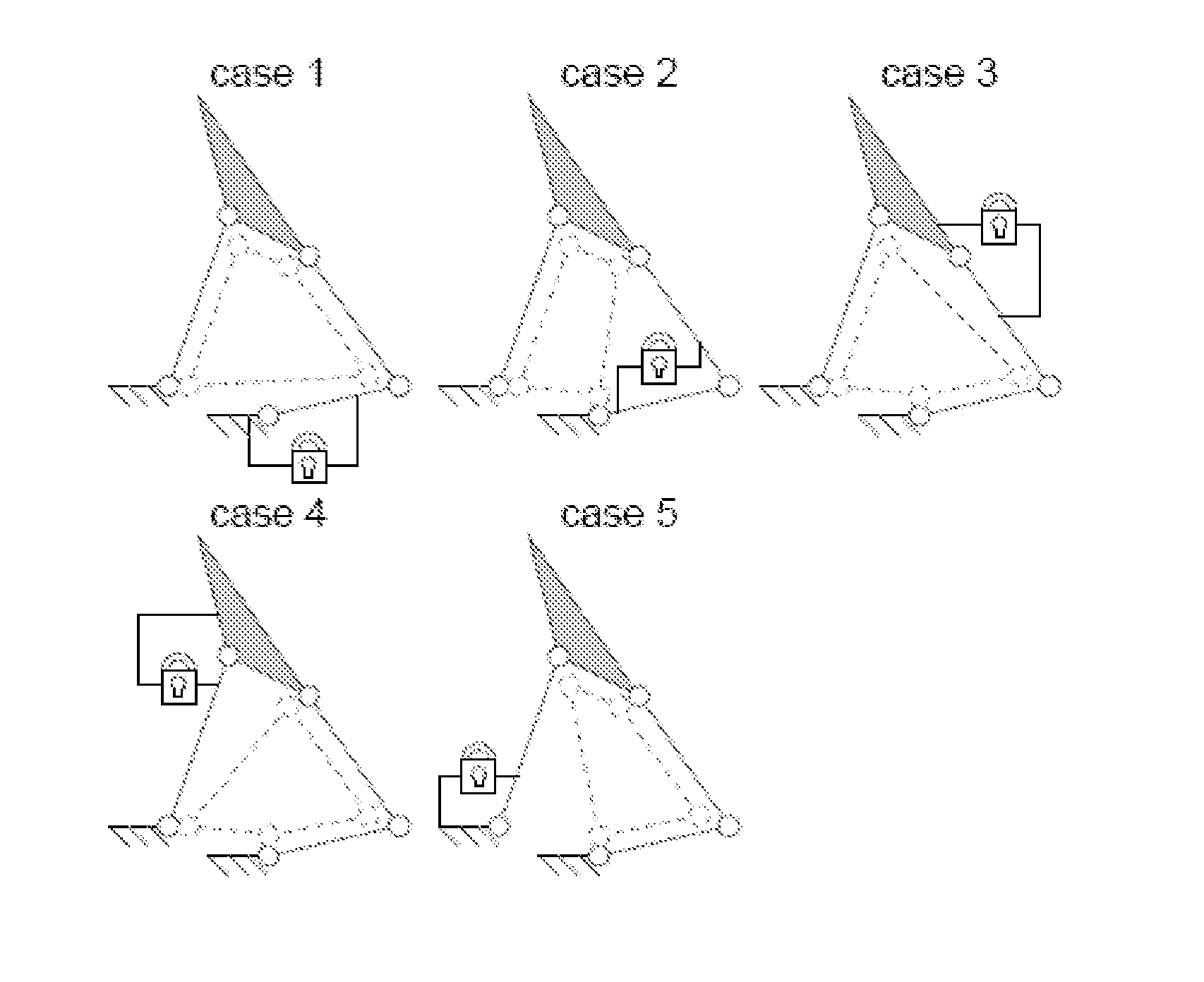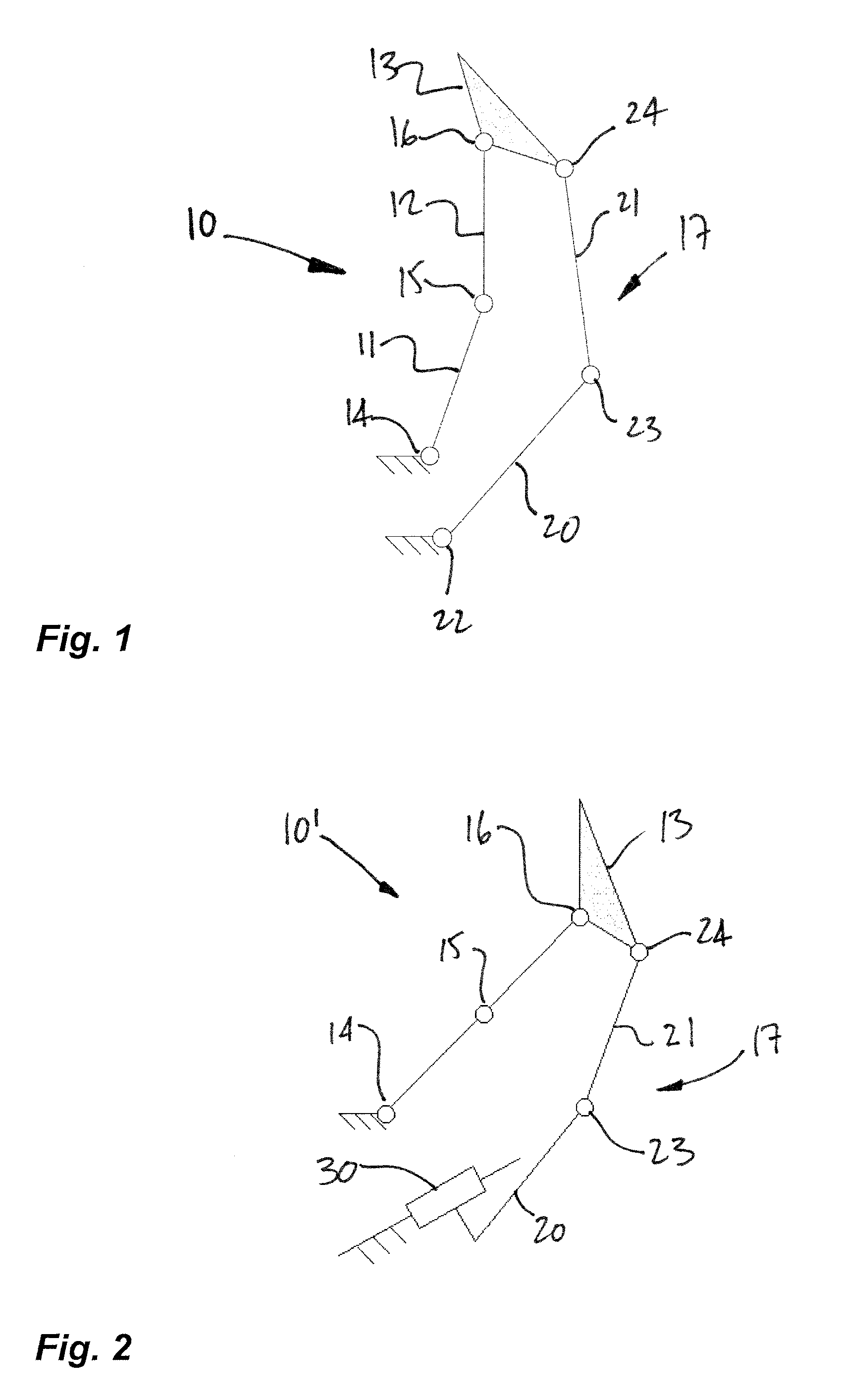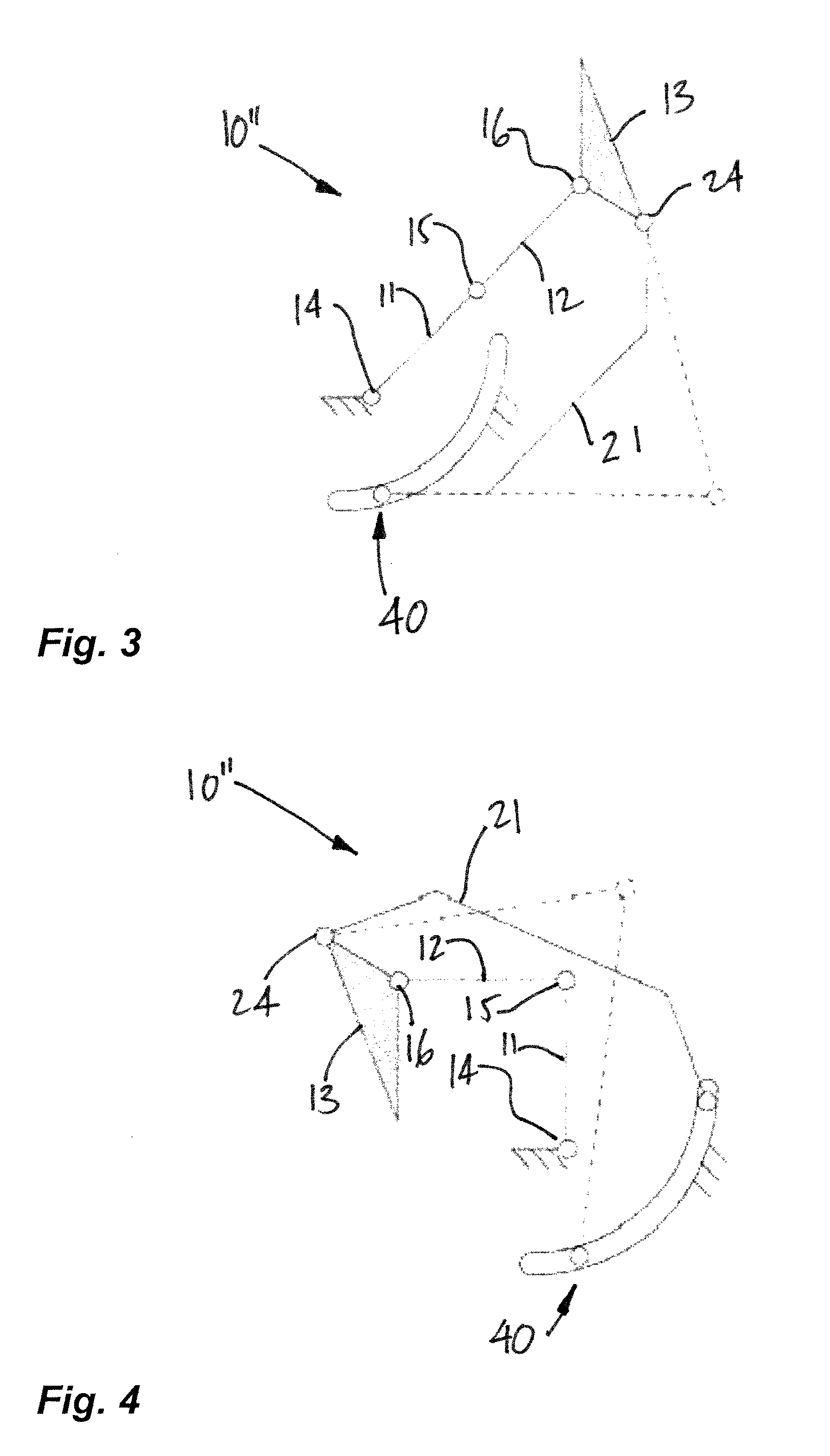Self-adaptive mechanical finger and method
a mechanical finger and self-adaptive technology, applied in the direction of manipulators, load-engaging elements, gripping heads, etc., can solve the problems of robotic hands that have little, if any, success outside research laboratories, and the complexity of controlling often more than 12 axes, and achieve the effect of not constraining the degree of freedom of mechanical fingers
- Summary
- Abstract
- Description
- Claims
- Application Information
AI Technical Summary
Benefits of technology
Problems solved by technology
Method used
Image
Examples
examples
Comparison of Two-Phalanx Architectures
[0102]The tools presented herein can be used to compare the different architectures of two-phalanx fingers obtained above. As an example, it is supposed that one wants to select an architecture among the latter to design a self-adaptive finger. It is assumed that only revolute joints are acceptable, and that the designer desires a transmission linkage with only one attachment to the ground. Due to the latter hypothesis, the architectures A345, A734, B234, C612 and C673 are eliminated, leaving 14 valid choices. With the geometric parameters presented in FIG. 14, where the torque nomenclature in the transmission linkage is detailed, the expressions of the corresponding Selection matrices are presented in FIG. 15. Again, due to the complexity of the symbolic expressions of these matrices, only numerical results (rounded to one digit) are presented with the geometric parameters and configurations corresponding to FIG. 16.
[0103]To evaluate the remai...
PUM
 Login to View More
Login to View More Abstract
Description
Claims
Application Information
 Login to View More
Login to View More - R&D
- Intellectual Property
- Life Sciences
- Materials
- Tech Scout
- Unparalleled Data Quality
- Higher Quality Content
- 60% Fewer Hallucinations
Browse by: Latest US Patents, China's latest patents, Technical Efficacy Thesaurus, Application Domain, Technology Topic, Popular Technical Reports.
© 2025 PatSnap. All rights reserved.Legal|Privacy policy|Modern Slavery Act Transparency Statement|Sitemap|About US| Contact US: help@patsnap.com



